One of the best and tastiest ways to conserve meat is to smoke it. The meat is delicious, and if you keep it in a cool, dry place, it can last up to a year and sometimes even longer. Here’s how to build a smokehouse in your backyard.
The system used is pretty simple. You make a fire, and the smoke goes through a long tube or pipe. The smoke will then cool down and reach the meat at the appropriate temperature (85 degrees to 125 degrees Fahrenheit).
Why Building a Smokehouse?
You ever think about building a smokehouse? It’s one of the best things I’ve added to my homestead. You can preserve meat, fish, even cheese, and the flavor you get—nothing beats that smoky goodness.
Plus, it keeps your food longer without relying on a freezer, which means less energy use and more space.
It’s not too expensive to build one yourself, and you know exactly what’s going into your food—no weird preservatives. Whether you’ve got a big harvest to save or just want amazing smoked meals, a smokehouse is totally worth it.
Step-by-Step Guide:
Dig the groove. The fire pit will be built downward so that the smoke can go upward.
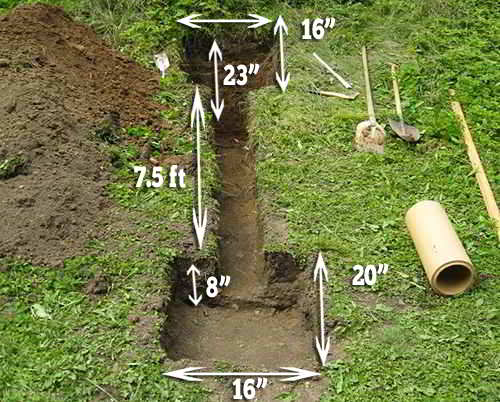
A pipe should be laid out between the holes so that the smoke can travel to the meat.
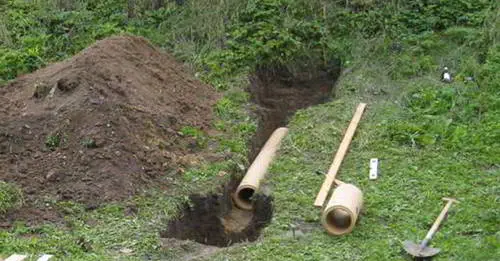
Cement was put in the first hole to create a floor.
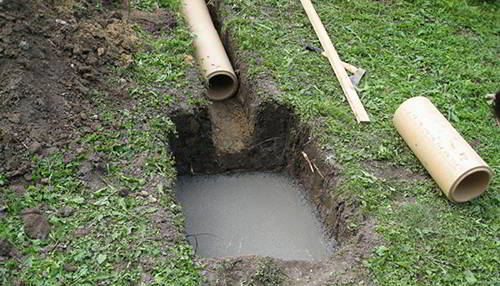
The fire pit was built using bricks and cement.
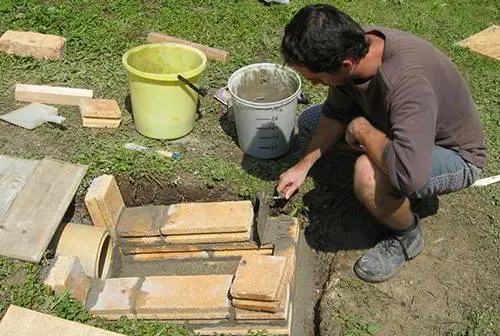
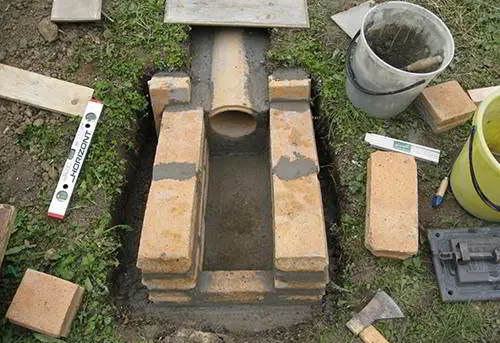
A cast iron door was installed in front of the fire pit.
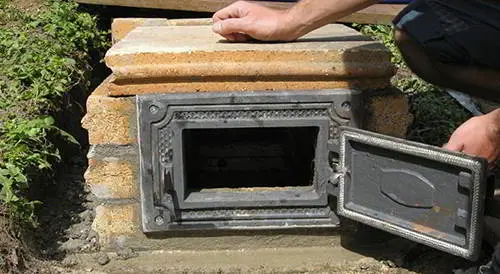
Line the hole for the actual smokehouse with bricks.
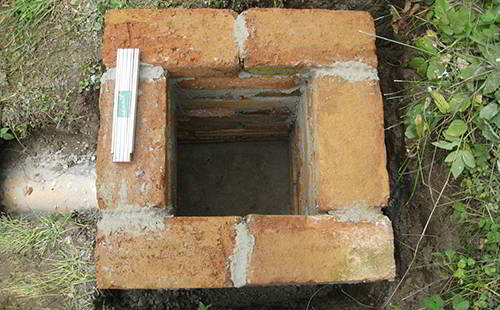
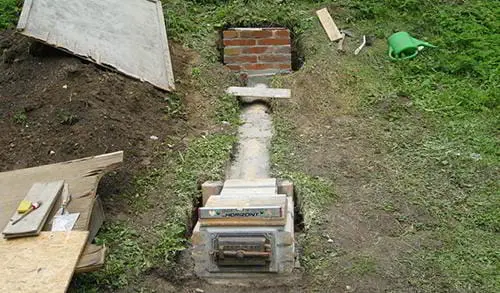
A fire was lit to make sure everything was in order.
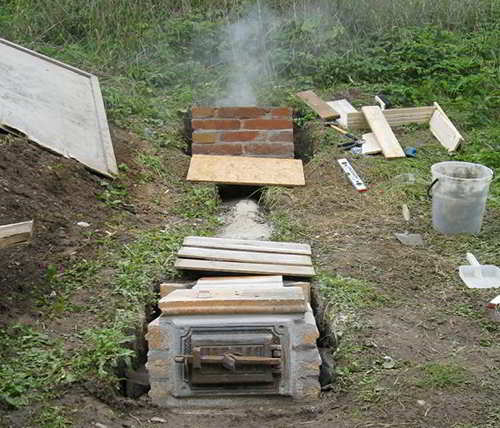
You need wood pallets, preferably hard wood, to build the foundation for the smokehouse. Ideally, the trees used to construct the smokehouse should be cherry, pear, apple, or apricot.
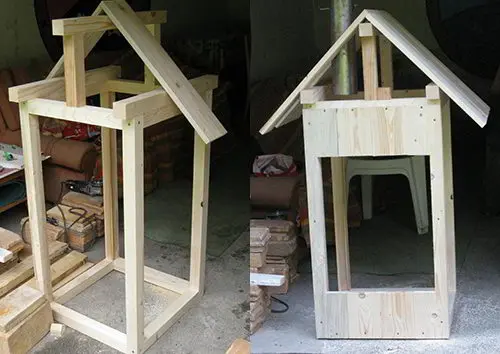
A space for the horn has been carved out and for the wires used to hang the meat on.
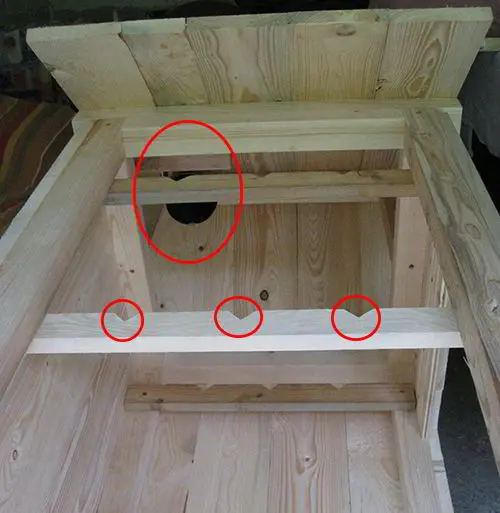
The finished product:
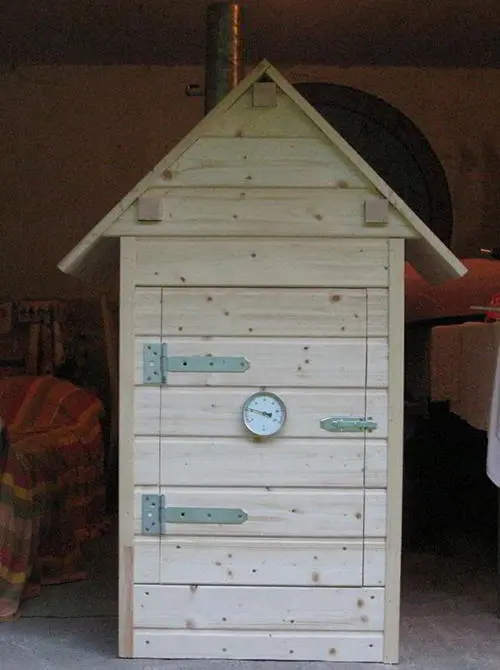
Dirt was put around and over the pipe, and wood pallets were used as steps.
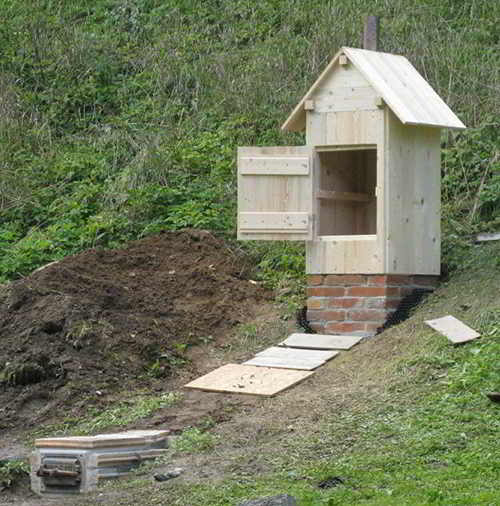
The smokehouse has been painted and is used regularly.
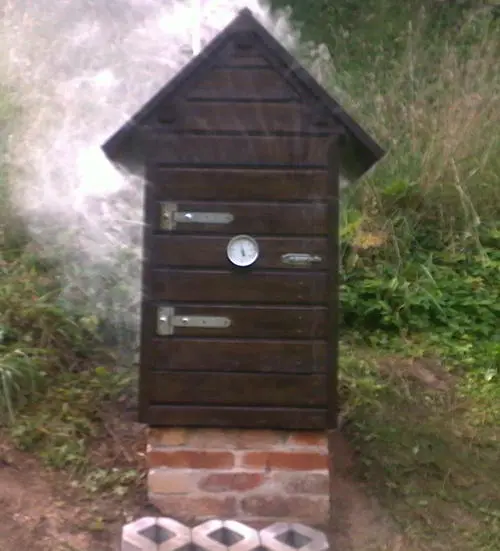
Here are the meats being smoked.
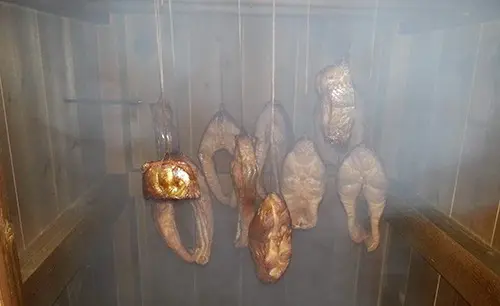
The best types of wood for smoking meats are hickory, red oak, mesquite, cherry wood, and apple-wood. This smokehouse can be your next weekend project.
You may also like:
Is It Legal To Go Off The Grid In Your State?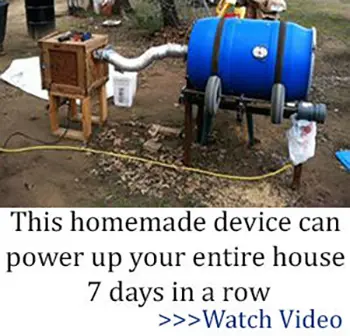
The U.S. Army’s Forgotten Food Miracle (Video)

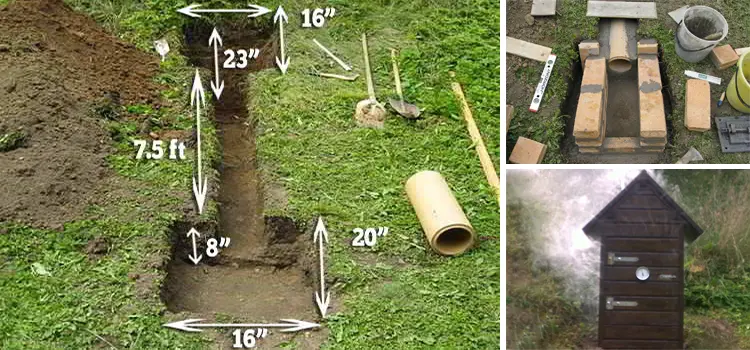








Thank you!
This is an awesome project. Hope I can make it one of these weekends.
Just how do you store the meat/chicken after it’s smoked?
The article says you can keep the smoked meat up to a year and sometimes even longer and this is actually true. My dad used to make smoked meat (usually pork and sometimes fish) and he kept it wrapped in a hard paper in the fridge for a really long time.
We never tried to do this with chicken meat but we will definitely try this soon.
In a cool, dry and dark place. A basement or cellar are best.
Could you provide a parts list? Like do I need special bricks or tube or concrete or similar?
I would definitely use fire bricks and refractroy cement for the fire box. The heat would crack regular bricks and cement. The pipe isn’t cheap. I was surprised by the prices of it. I don’t see any reason why you can’t use stainless pipe. It looks like he shows the pipe covered in cement near the end of construction. I don’t think I would use a steel pipe. In time it would rust and collapse. Then you would have to try to get it out. The horn would be easy to replace so that could be steel pipe. For the building I think regular cement would be ok for the foundation. It is a much lower heat there than the fire box. The idea of running the smoke underground would cool it down for the desirable temperatures of 85 to 125 degrees. Some of the heat will also be controlled by a flu ( slowing the air-flow either on a fire door or at the horn. I hope this answers “some” of your questions or helps you to make your own list of materials.
Article suggests using pallets to build smokehouse and suggests pear, apple, cherry, etc. – doubt you can find this in pallets. The pictured smokehouse appears to be made of new wood – and mostly tongue and groove. Only T and G I know of is either pine or pressure treated which I wouldn’t recommend. But – I like the design.
Hi! How often, on average, does the fire box need to be refilled?
How do you remove ashes when finished?